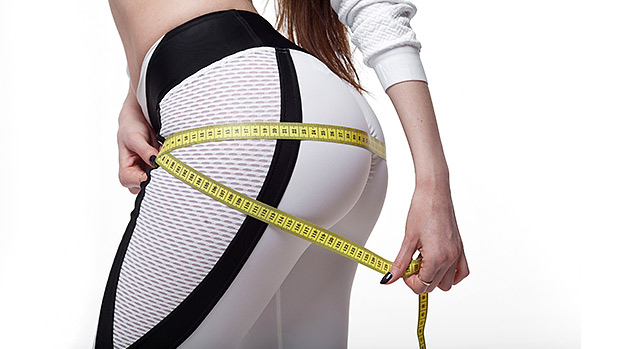Accomplished exercise physiologist Bret Contreras is generally credited with inventing the hip thrust exercise, but I'm not exactly sure you can invent an exercise. Maybe exercises are just there waiting to be discovered, like how de Soto discovered the Mississippi.
It is safe to say, though, that at the very least Bret popularized the hip thrust, which is now the go-to movement for any woman who ever dreamed of building a booty so big that she's been barred from walking into fine China shops lest she make a sudden about-face and inadvertently knock all the Lladro collectible porcelain figurines off the shelf.
Frankly, it's mind-blowing how popular this exercise, and by extension, how popular Bret is among young women. He's an exercise physiologist who actually has fan girls, which is kind of like a guy who sells extended warranties on in-window air conditioners having fan girls. Both, I think, are pretty damn rare.
Regardless, if the results of a new study from Brazil are to be believed, glute-obsessed women should maybe have been giving some of their adulation to Fred Hatfield, aka Dr. Squat, instead.

In an effort to compare the effects of the back squat and hip thrust exercises on muscle strength and hypertrophy, Brazilian scientists recruited 22 well-trained women. Half of them did conventional squats (to 140 degrees of knee flexion, which is below parallel) for 12 weeks and half of them did hip thrusts for 12 weeks.
Before the study started, the researchers assessed the women's 1RM on both squats and hip thrusts while also measuring the thickness of their quads and their glutes. The women followed a non-linear periodization model where they performed 6 sets of hip thrusts or 6 sets of back squats to momentary failure:
- On weeks 1, 5, and 9, the women did 12-15 reps with 30 to 60 seconds of rest between sets.
- On weeks 2, 6, and 10, the women did 4-6 reps with 3 to 4 minutes of rest between sets.
- On weeks 3, 7, and 11, the women did 10-12 reps with 1 to 2 minutes of rest between sets.
- On weeks, 4, 8, and 12, the women did 6 to 8 reps with 2 to 3 minutes of rest between sets.
After the 12-week program was over, the scientists repeated all their measurements and tests.

Okay, your Spidey sense probably already intuited the results. Sure enough, both groups exhibited growth in their quads and glutes, but squats led to more than double the glute growth and about 6 times more quad growth.
Additionally, doing the back squat improved 1RM back squat and 1RM hip thrust strength, but doing the hip thrust only improved hip thrust 1RM strength.
In other words, any improvements in hip-thrust strength failed to carry over to squat strength, while improvements in squat strength did carry over to hip thrust strength.
Firstly, Bret Contreras fan girls should take down all the shirtless Bret Contreras posters from their bedroom walls. They might also want to erase all their moon-eyed, aspirational, "Mr. and Mrs. Bret Contreras" scribblings from the margins of their training logs.
Nah, I'm kidding. Sort of. Look, women who like big butts should keep doing hip thrusts because they're a valuable tool to keep in their glute-building tool box.
That being said, hip thrusts are a single-joint exercise and their range of motion, even when done perfectly, is kinda' small, so it makes sense that their muscle-building effects would suffer a bit in comparison to old-school squats. It also makes sense that their strength-building effects might not transfer well to other movements (if that even matters to the glute obsessed).
And sure, I understand that hip thrusts exhibit off-the-chart EMG readings, but EMG rankings might not be the ultimate arbiter in determining an exercise's worth. Mechanical tension over an extended distance appears to be more important, at least in the case of squats v. hip thrusts.





